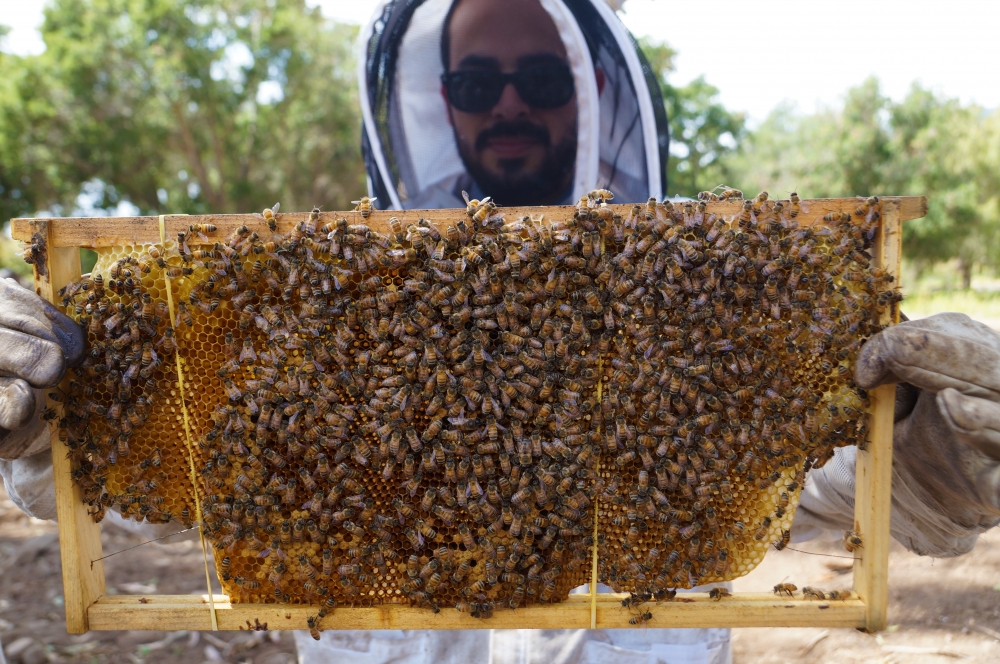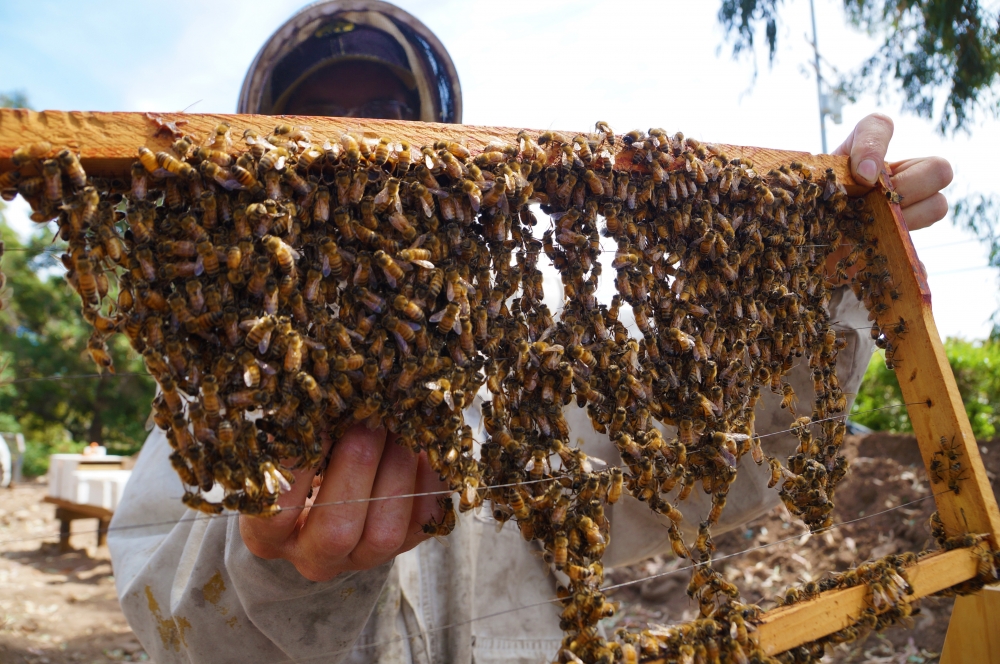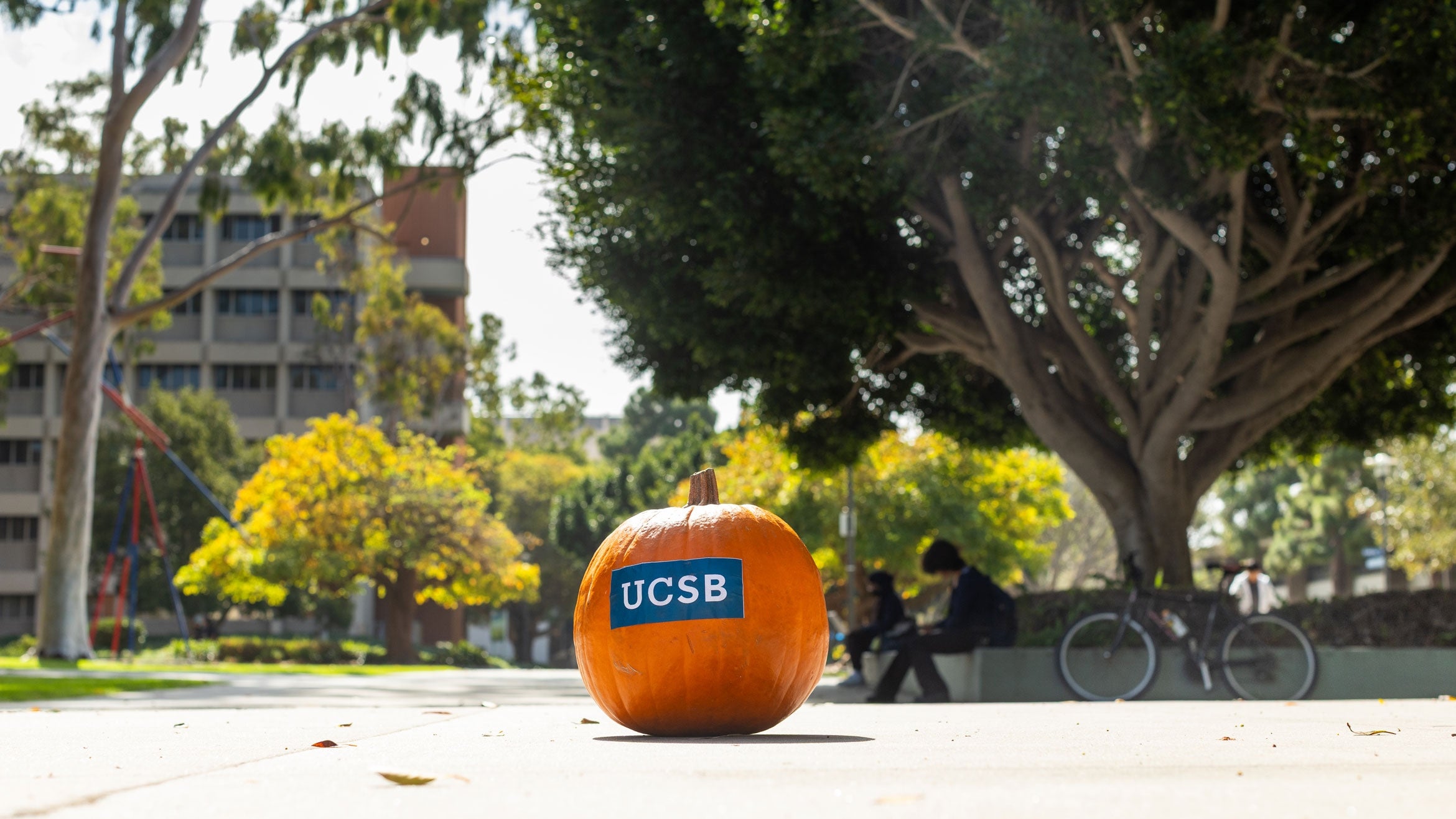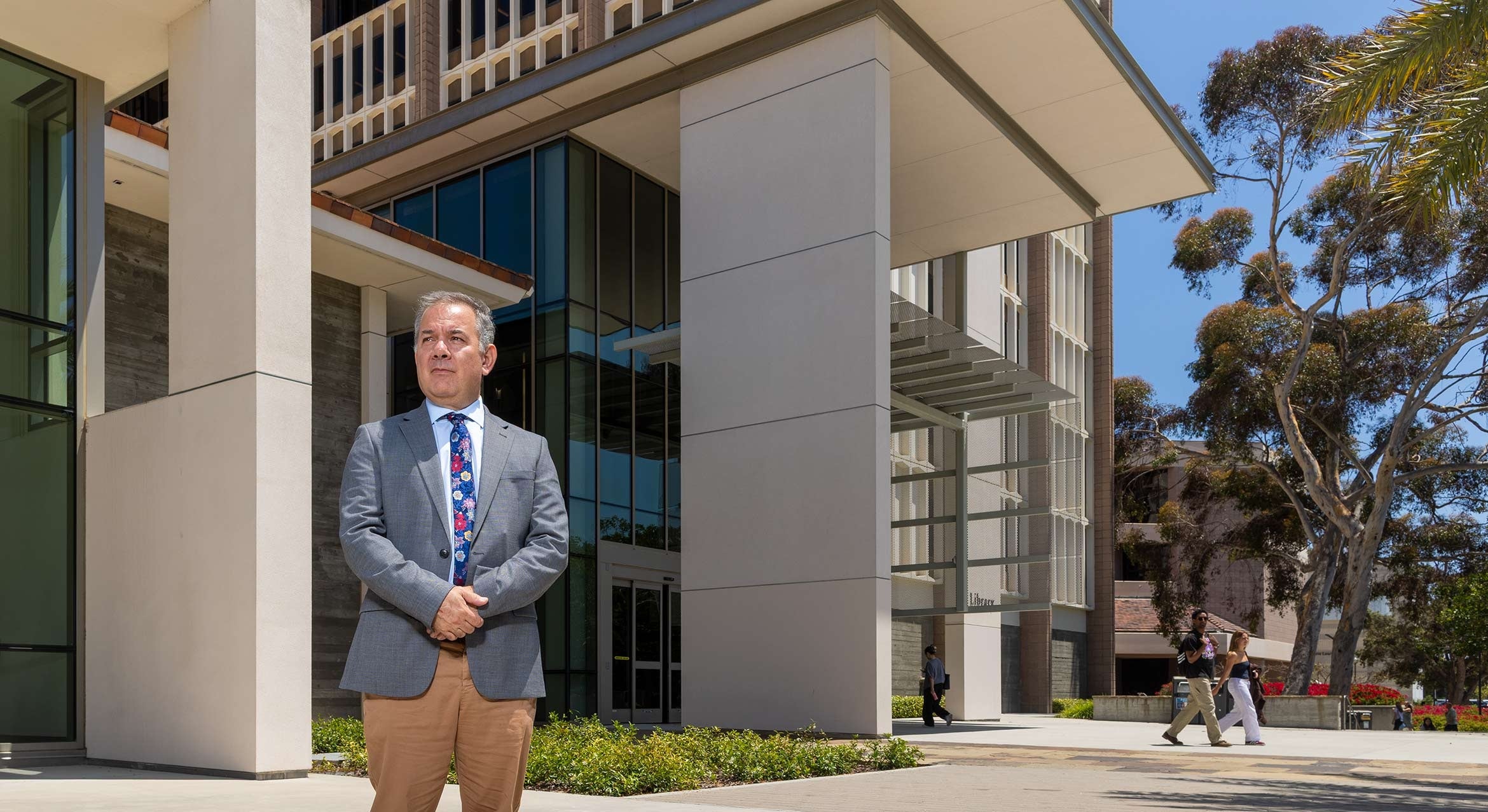Bee Friendly
Ahh, spring at UC Santa Barbara — time to shake off winter’s weariness and delight in the balmy weather, the fresh air and the greenery.
Turns out students aren’t the only ones enjoying the warm weather. Honeybees, enticed by new blooms, are busy foraging, pollinating and, well, honey-making. It’s a big job, though, and inevitably the party gets too big for one location and the colony splits; the bees swarm and move on. And they’re not particular about their new digs — a hole in a tree, a crevice in a wall or rock, almost any relatively undisturbed, defensible hollow space could become the next hive.
Such was the case recently at the Associated Students Annex, right in the middle of campus, just steps away from Storke Tower. Unbeknownst to people nearby, the black and yellow insects had set up shop, built their comb, moved in their queen and commenced working. By the time they had been discovered, honey production was in full swing.
Unfortunately, bees and people don’t always mix. Pest-control companies are called in to remove the hive and drive the bees away, often in an unfriendly manner. While removal and relocation of honeybees had already been in practice at UCSB, Matthew O’Carroll, the campus’s refuse, recycling and water efficiency manager, along with facilities management colleague Jon Cook, housing staff Tom Beland (an avid honeybee keeper himself) and Nestor Covarrubias and Calli Price in procurement services knew there had to be a better way — one that complemented UCSB’s commitment to sustainability.
Enter Nick Wigle, proprietor of Super Bee Rescue and Removal. Wigle is a Carpinteria-based beekeeper and bee-removal expert. After removing the hive from campus, he relocated the bees to his farm.
“Swarms are a natural means of reproduction of honeybee colonies, and are in fact the queen and her workers searching for a new home,” said O’Carroll. “They are frequent during the spring after they’ve survived the winter, and typically last between several hours to a couple days depending on how long it takes the scouts to find a new home to make a hive.”
Honeybees and other pollinators are essential to the lifecycles of plants and production of food crops, and are under the multiple threats of habitat loss, disease and infestation and overuse of pesticides.
The team procured Wigle’s services when the campus’s existing pest control contract expired. That contract covered a wide variety of species but did not allow for the tailoring of the program to the exact needs of the campus.
“For example, some companies are experts in bird exclusion while others may be experts in live bee removal, and while there are companies that can do both, we determined that we could create the most comprehensive and effective pest control program for the campus by allowing vendors to bid on their areas of expertise,” O’Carroll said.
Friendly bee removal is just one of the many steps the campus is taking to become more sustainable in its practices. In addition to water-saving methods, purchasing of green products, LEED-quality construction and retrofits and promoting local growers, staff members continue to look for more opportunities to incorporate social and environmental responsibility into campus operations.
“UCSB is well known as a campus that promotes a culture and educational environment for sustainability,” said Price. “We’re always interested in working with the campus to uncover commodities that could be redirected to more sustainable alternatives.”
The recovery period after removal allows Wigle to assess how defensive — he calls it “spicy” — the bees are and to determine if they are the locally uncommon Africanized honeybees that are legendary for their aggression. The species and genetics are often less important than the circumstances the bees have been placed under, he said. Rough handling of regular honeybees can make them defensive.
“I like the idea of letting them do their thing,” Wigle said. “When they’re swarming they’re incredibly gentle. They have no desire to sting, and whether or not we remove them completely depends on their location.”
Aside from the obvious benefits of pollination and honey production, having docile male bees around can dilute the spiciness of the bee community in an area. Montecito’s bees, because of the number of beekeepers (who tend to prefer gentle bees), tend to be gentle, according to Wigle. Downtown Santa Barbara also has gentle bees. However, in his experience, Goleta-area bees tend not to be as laid back.
“About 40 percent of bees I remove within a half mile of the airport are spicy,” said Wigle, who wants to better understand the population dynamics of bees to make more informed decisions and even prevent spiciness in the first place. When spicy bees must be relocated to a less human-populated area, he said, they are done so with the same method used on less defensive bees — sometimes a vacuum, and a whole lot of patience.








